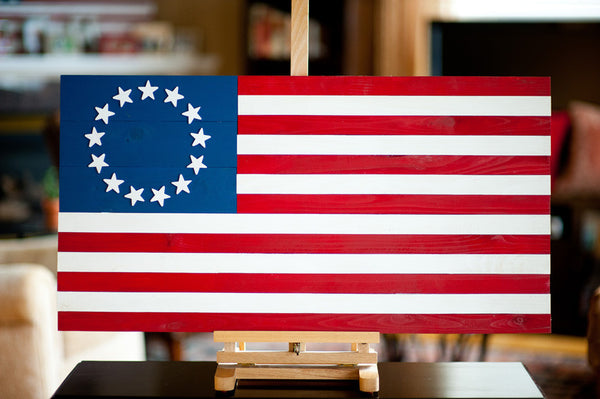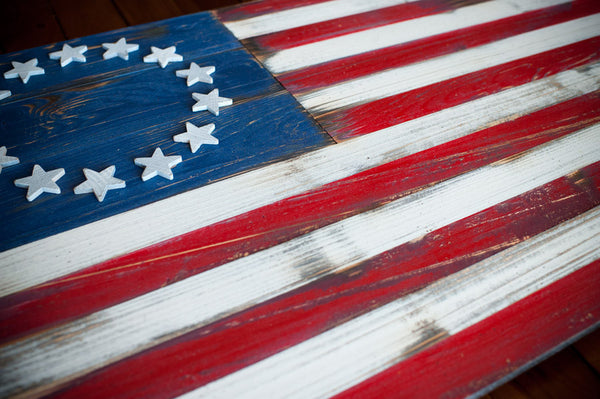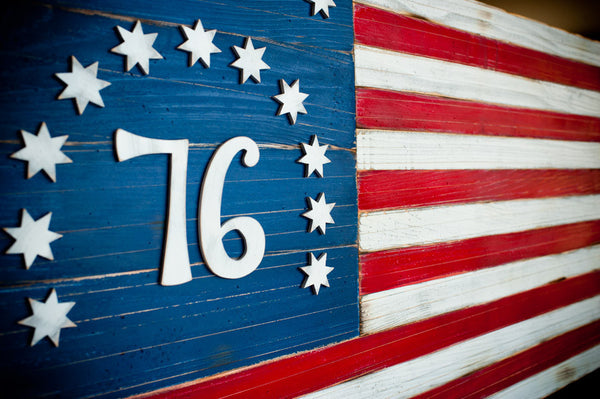There’s nothing better than walking the brisk, vibrant streets of Philadelphia in October.
I recently had the chance to visit the city for the first time, and growing up on the west coast, it was one of the most historic places I’d ever seen. If you’ve been there, you understand. Each city block has one, if not multiple, historic properties, such as Independence Hall, the birthplace of both the Declaration of Independence and the Constitution, Christ Church, where Colonial America made its break with the Church of England, and Elfreth’s Alley, the nation’s oldest continuously inhabited residential street.
One of these properties is The Betsy Ross House, what many regard as the birthplace of the American flag. Today, while tourists enjoy the $5 tour and novelties around the gift shop, many aren't aware of the lack of historical evidence for the classic story they know so well. The truth is that many regard Betsy Ross’ role in making the first American flag as nothing more than a myth.
The story goes that in June of 1776, Betsy Ross was a widow of three deceased husbands struggling to run her own upholstery business. One day, Robert Morris, the uncle of one of her deceased husbands (a man of wealth and integrity in Philadelphia who almost single-handedly saw to the financing of the Revolutionary War, and the establishment of the Bank of the United States), brought General Washington and Col. George Ross to her house to present a rough design of the flag. She immediately saw some defects: instead of being square, she felt that the flag should be one-third longer than its width, and instead of having the stars scattered promiscuously over the field, she said they should be either in lines or in some adopted form as a circle or a star, and instead of having six-pointed stars, she said they should be five pointed. Impressed, the committee entrusted Betsy with making the first American flag.
While some believe this story to be true, others say that this story didn’t appear until her grandson William Canby popularized the legend in the late 1800s. While the Betsy Ross flag is used to commemorate the nation’s birth, many believe that the Hopkinson Flag was the first version of the Stars and Stripes. Though no one can say for certain.
The clearest and most authoritative set of evidence regarding this story as fiction are the Affidavits of Rachel Fletcher, daughter of Betsy Ross, Sophia B. Hildebrant, granddaughter of Betsy Ross, and Margaret Donaldson Boggs, niece of Betsy Ross.
These documents were made public by the State of New York and the state of Philadelphia in 1871, 1870, and 1870, respectively. You can see them here.
On the other hand, Marc Leepson, author of the 2005 book, Flag: An American Biography, said during an interview, “As far as the big question is concerned—Did she make the first American flag?—every historical study has come to the same conclusion. There’s no good historical evidence that she did. But that doesn’t mean she didn’t. There’s simply a lack of documentation. Most historians believe the story is apocryphal.”
A bit more confident in 2011, Leepson’s Washington Post opinion piece about the American Flag, reads, “The Betsy Ross story is the most tenacious piece of fiction involving the flag. There simply is no credible historical evidence — letters, diaries, newspaper accounts, bills of sale — that Ross (then known as Elizabeth Claypoole) either made or had a hand in designing the American flag before it made its debut in 1777.”
Marc Leepson isn’t the only critic of The Betsy Ross Flag. There are numerous individuals and groups who’ve worked hard to prove the story a myth. On the other hand, The Flag Act of 1777, established the first congressional standard for official United States ensigns. The shape and arrangement of the stars is not mentioned, as there were numerous variations, but the legal description is one reason the Betsy Ross flag is given its legitimacy.
But nevertheless, while some historians still debate Betsy Ross’s involvement in the creation of the flag, the legend lives on, and the flag that was adopted in 1777 still lives on as a symbol of unity in a newly formed nation. The Betsy Ross Flag is a long-lasting piece of America’s history.
Legend or legacy, here at Patriot Wood, we wanted to showcase the incredible story behind The Betsy Ross Flag with our own Betsy Ross Wood Flag. This unique flag proudly features a circle of 13 stars to represent the original 13 colonies.
Due to popular demand, we’ve also added a Betsy Ross Vintage Wood Flag to the collection. As you can see, it appears aged as a natural way to date the history of the flag.
Similarly, if you’re a fan of the Betsy Ross flag, you probably know a little bit about the Bennington flag. Like many Revolutionary era flags, the Bennington flag features 13 stars and 13 stripes, symbolic of the 13 American colonies that were in a state of rebellion against England. A distinctive feature of the Bennington flag is the arrangement of the 13 stripes, with white being outermost instead of red. Also, the blue canton is higher by two stripes and incorporates a large '76' surrounded by 13 seven-pointed stars. Legend claims that during the Battle of Bennington, the original flag was carried off the field by Nathaniel Fillmore and passed down through the Fillmore family. Our Bennington 1776 Vintage Wood Flag has unique 3D raised elements that provides an incredible gift, or a conversation piece all your friends will rave about.
Legacy or legend, fact or myth, the Betsy Ross flag is a piece of American history we love. Our wood flags are a great way to celebrate that history. Give as a gift, or get for yourself, the story of the Betsy Ross Wood Flag is a fun way to savor America’s history.
























